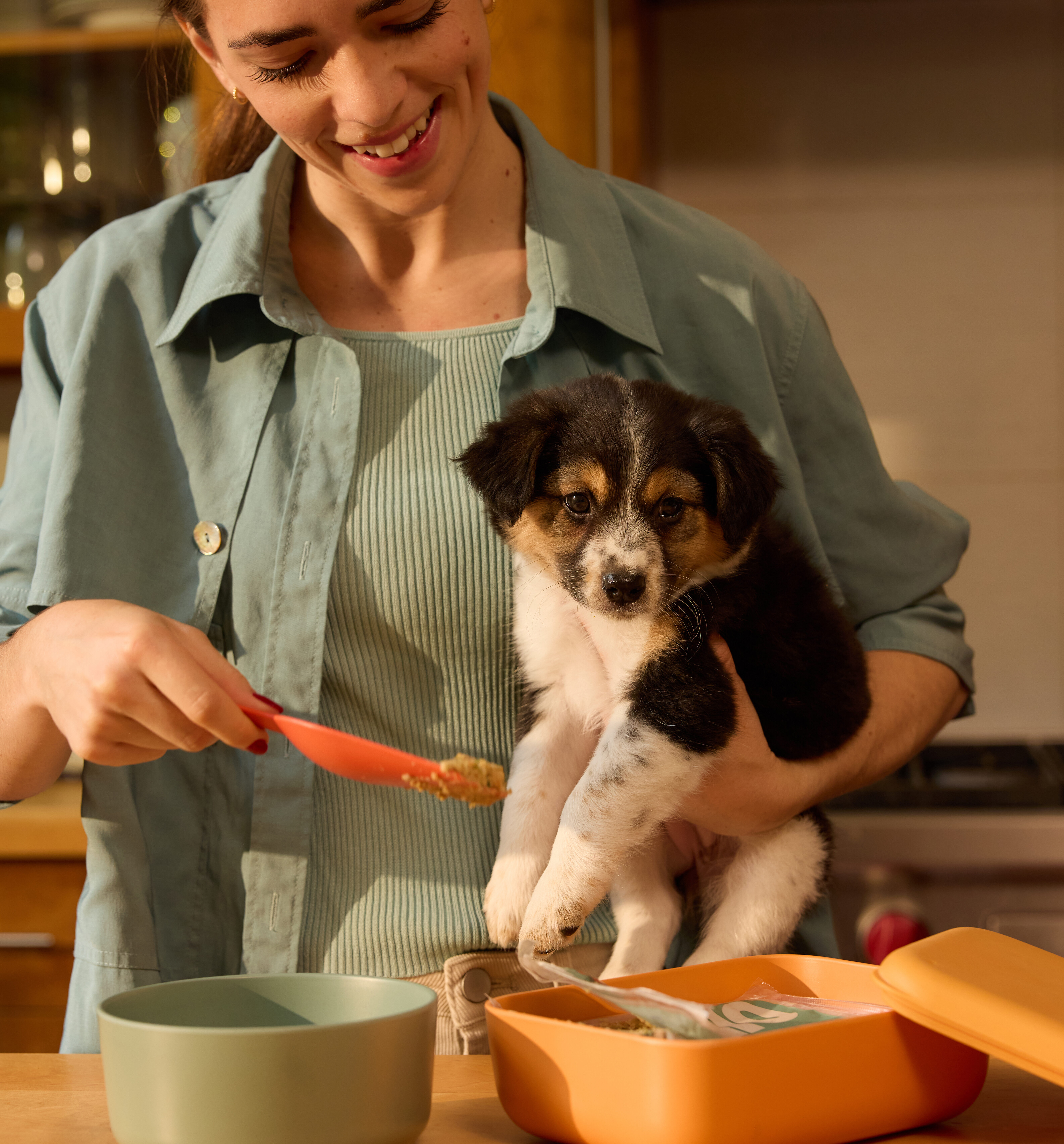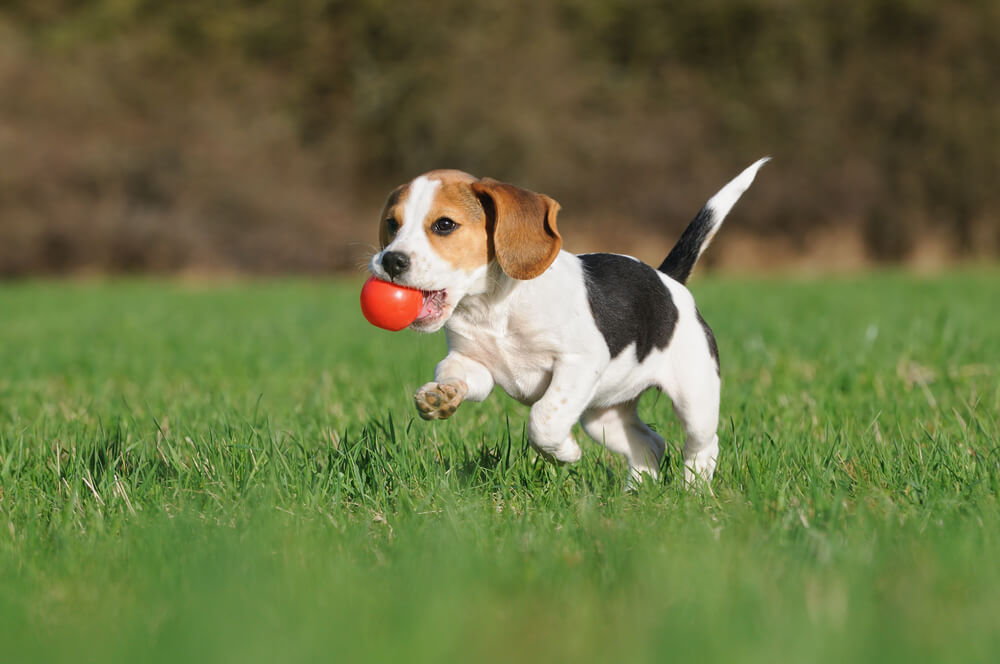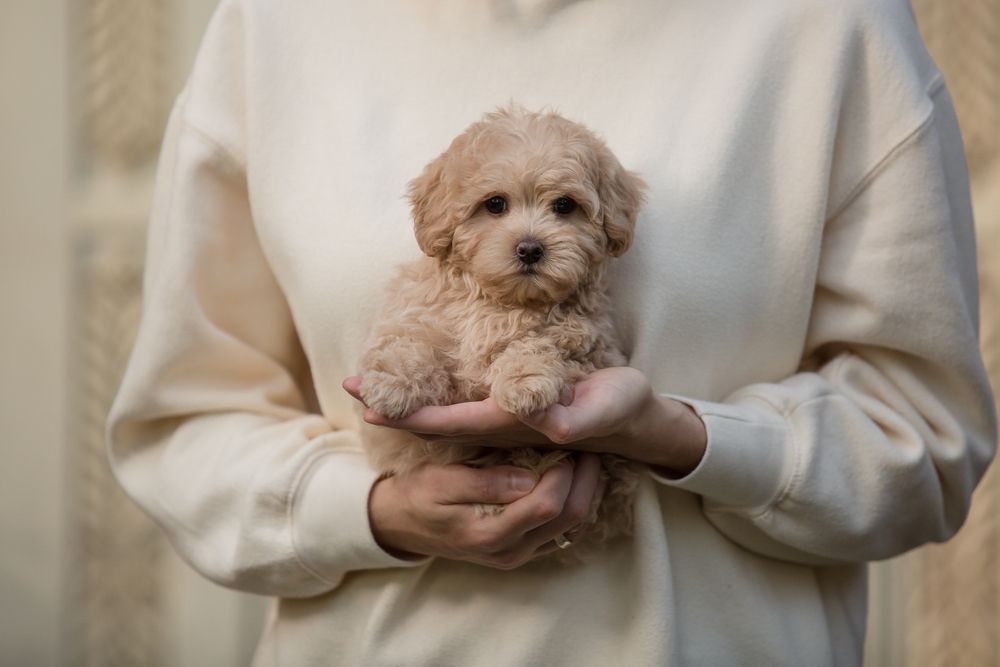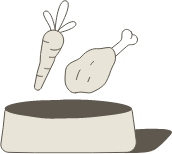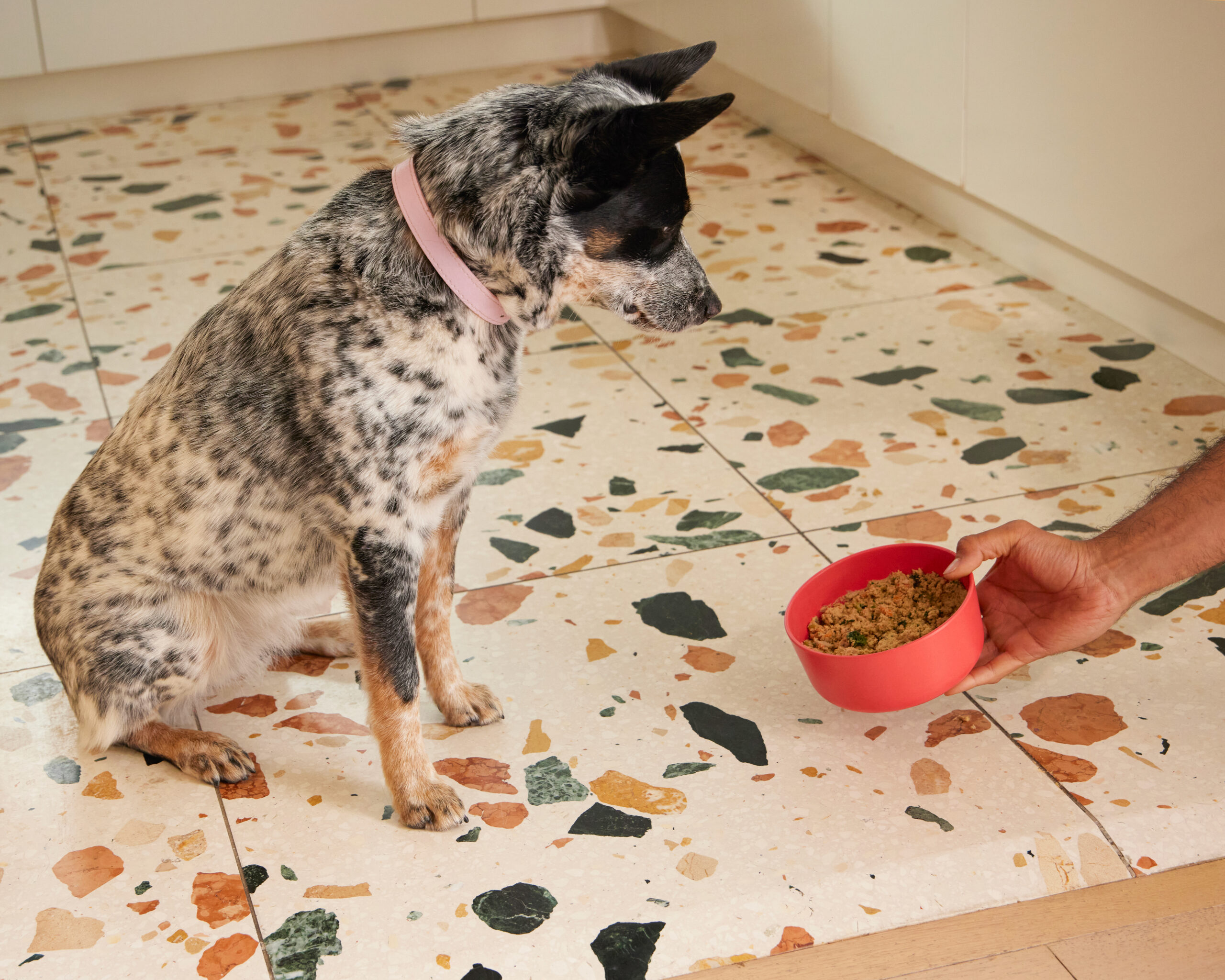Hey Ollie blog readers! We’re offering you an exclusive 60% OFF your starter box! Try now!
A longer, happier life starts with what you put into your dog’s bowl. The right food helps ensure your puppy develops properly, maintains a healthy weight, and builds a strong immune system. With such a crucial decision to make, we’re giving new pup parents the full scoop on what to feed their pup at various stages of puppyhood.
Understanding Your Puppy’s Nutritional Needs
Puppies experience rapid growth during their first year of life. Their bodies are developing quickly, and their digestive and immune systems are still maturing. This makes their nutritional needs quite different from those of adult dogs.
Why Puppy-Specific Food Matters
Feeding your puppy adult dog food can deprive them of essential nutrients needed for normal development[1]. Puppy food is specially formulated with higher levels of protein, calories, and specific nutrients that support:
- Bone and muscle development
- Brain and eye development
- Immune system function
- Energy needs for play and growth
Puppies require these specialized formulations until they reach maturity, which varies by breed size. Small breeds typically mature faster (around 7-9 months) while larger breeds may need puppy food for 12-14 months or even longer[1].
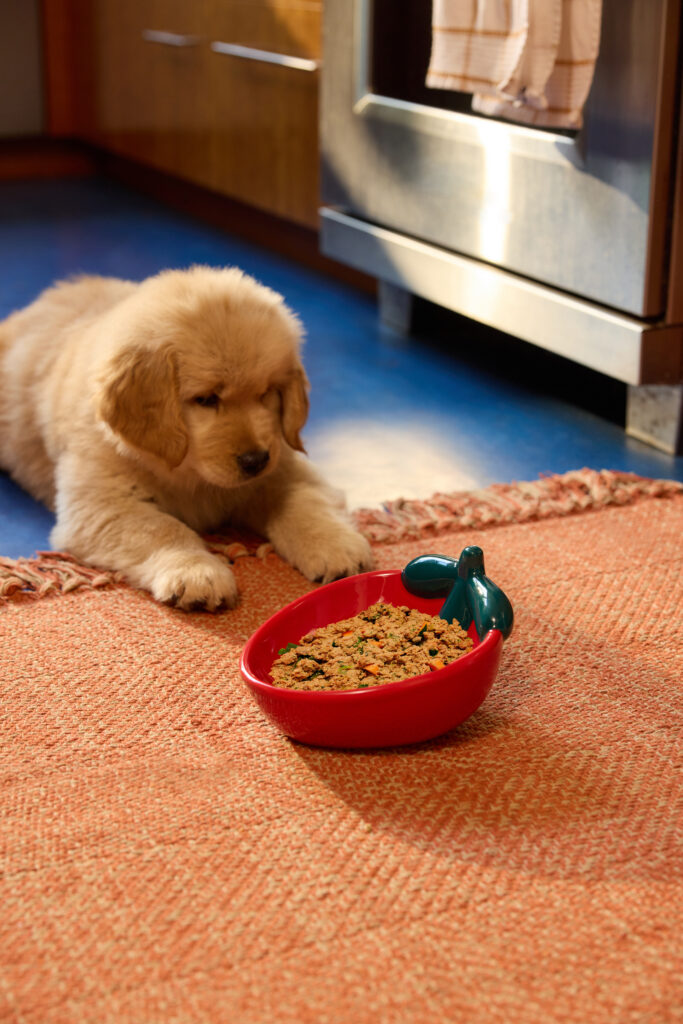
Creating a Feeding Schedule for Your Puppy
A consistent feeding schedule helps establish routine and ensures your puppy receives proper nutrition throughout their developmental stages.
First-Year Feeding Timeline
6-12 Weeks (Early Puppyhood)
- Feed puppy-specific food formulated for proper development
- Provide four small meals daily to meet nutritional demands
- Large breed puppies should transition to unmoistened dry food by 9-10 weeks
- Small breed puppies can transition by 12-13 weeks[1]
3-6 Months (Middle Puppyhood)
- Reduce feedings from four to three times daily
- Monitor body condition — your puppy should be losing their potbelly by 12 weeks
- Continue with puppy portions if they still appear pudgy[1]
6-12 Months (Late Puppyhood)
- Transition to feeding twice daily
- Note that spaying/neutering during this period slightly lowers energy requirements
- Small breeds can begin transitioning to adult food at 7-9 months
- Larger breeds should continue with puppy food until 12-14 months[1]
After 1 Year
- Most dogs can be fed their daily amount split between two meals
- Ensure complete transition to adult food appropriate for your dog’s size and activity level[1]
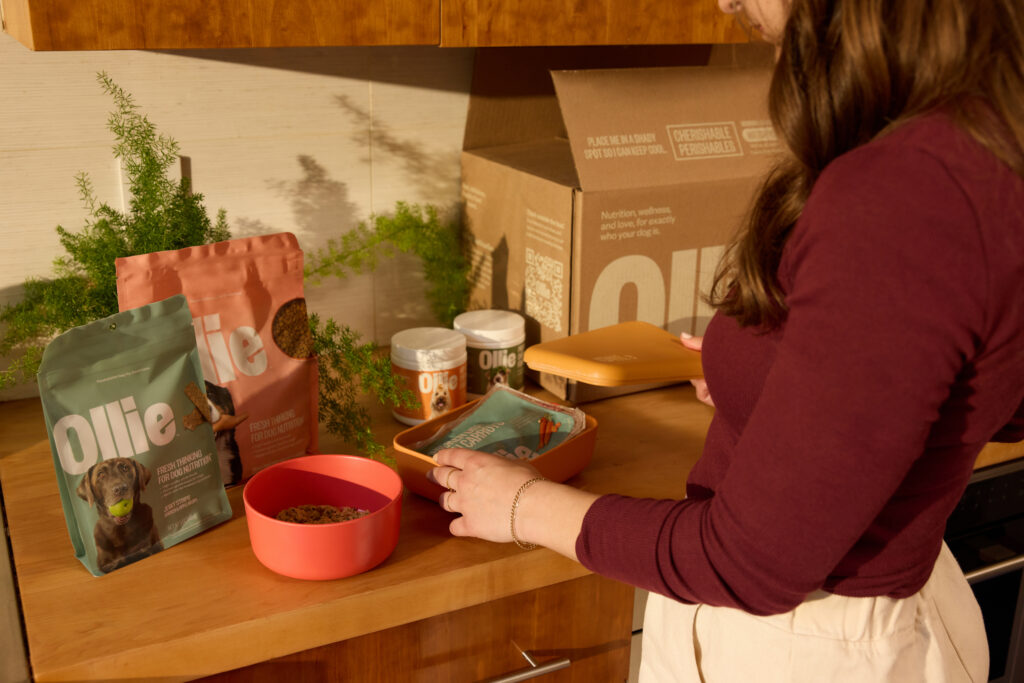
Selecting the Right Type of Puppy Food
With countless options available, choosing the right type of food for your puppy can feel overwhelming. Understanding the different formats and their benefits can help you make an informed decision.
Dry Kibble vs. Wet Food vs. Fresh Food
Dry Kibble
- Convenient and economical
- Helps with dental health through chewing
- Longer shelf life once opened
- Generally more calorie-dense
Wet Food
- Higher moisture content helps with hydration
- Often more palatable for picky eaters
- Easier to eat for very young puppies
- Usually contains fewer preservatives
Fresh Food
- Minimally processed with whole food ingredients
- Typically contains higher-quality protein sources
- Often customized to your puppy’s specific needs
- May support better digestion and nutrient absorption
Fresh food options like those offered by Ollie provide human-grade ingredients tailored to your puppy’s specific nutritional needs. These meals are gently cooked to preserve nutrients while eliminating harmful bacteria, offering a balance between safety and nutritional quality.

Reading and Understanding Puppy Food Labels
Learning to decipher pet food labels helps you make better choices for your puppy’s nutrition.
Key Components to Look For
Protein Source
- Look for named animal proteins (like chicken, beef, or salmon) as the first ingredient
- Avoid generic terms like “meat meal” or “animal by-products”
- Puppies need higher protein levels than adult dogs for proper growth
Fat Content
- Healthy fats support brain development and provide energy
- Look for named fat sources like chicken fat or fish oil
- Omega-3 and omega-6 fatty acids are particularly beneficial for puppies
Carbohydrates
- Whole grains or vegetables provide energy and fiber
- Avoid foods with excessive fillers like corn or wheat gluten
- Some puppies may benefit from grain-free options, though this should be discussed with your veterinarian
Vitamins and Minerals
- Calcium and phosphorus in proper ratios for bone development
- DHA for brain and eye development
- Antioxidants to support immune function
Special Considerations for Different Breed Sizes
Your puppy’s breed size significantly impacts their nutritional needs and feeding approach.
Small Breed Puppies
- Higher metabolism requiring more calories per pound
- Prone to hypoglycemia (low blood sugar) if meals are too far apart
- Benefit from smaller kibble size for easier chewing
- Often mature faster, around 7-9 months of age[1]
Medium Breed Puppies
- More moderate growth rate
- Generally balanced nutritional needs
- Typically mature between 12-14 months
Large and Giant Breed Puppies
- Need controlled growth to prevent skeletal issues
- Require specific calcium-to-phosphorus ratios
- Lower calorie density to prevent too-rapid growth
- Longer maturation period, sometimes up to 24 months[2]
| Breed Size | Maturation Age | Daily Feedings (Early Puppyhood) | Transition to Adult Food |
| Small | 7-9 months | 4 meals, then 3 | 7-9 months |
| Medium | 12-14 months | 4 meals, then 3 | 12 months |
| Large | 18-24 months | 4 meals, then 3 | 12-14 months |
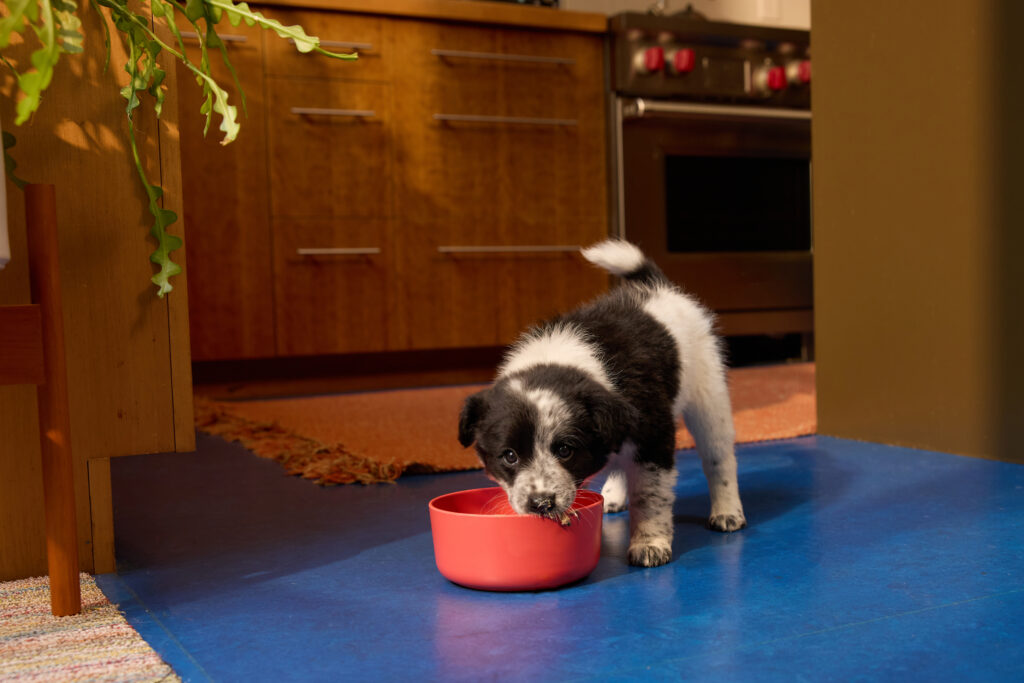
Common Puppy Feeding Mistakes to Avoid
Even well-intentioned pet parents can make mistakes when feeding their puppies. Being aware of these common pitfalls can help you avoid them.
Overfeeding
Puppies with extra weight may look cute, but excess weight during development can lead to orthopedic problems and establish unhealthy patterns. A properly fed puppy should be losing their potbelly by about 12 weeks of age[1]. You should be able to feel (but not see) their ribs, and they should have a visible waist when viewed from above.
Inconsistent Feeding Schedule
Puppies thrive on routine. Irregular feeding times can cause stress and digestive upset. Establish a consistent schedule and stick to it as closely as possible.
Inappropriate Treats
Treats should make up no more than 10% of your puppy’s daily caloric intake. Choose training treats specifically designed for puppies, and adjust their regular food accordingly to prevent overfeeding.
Sudden Food Changes
Abrupt changes in diet can cause digestive upset. When transitioning to a new food, do so gradually over 7-10 days by mixing increasing amounts of the new food with decreasing amounts of the old food.
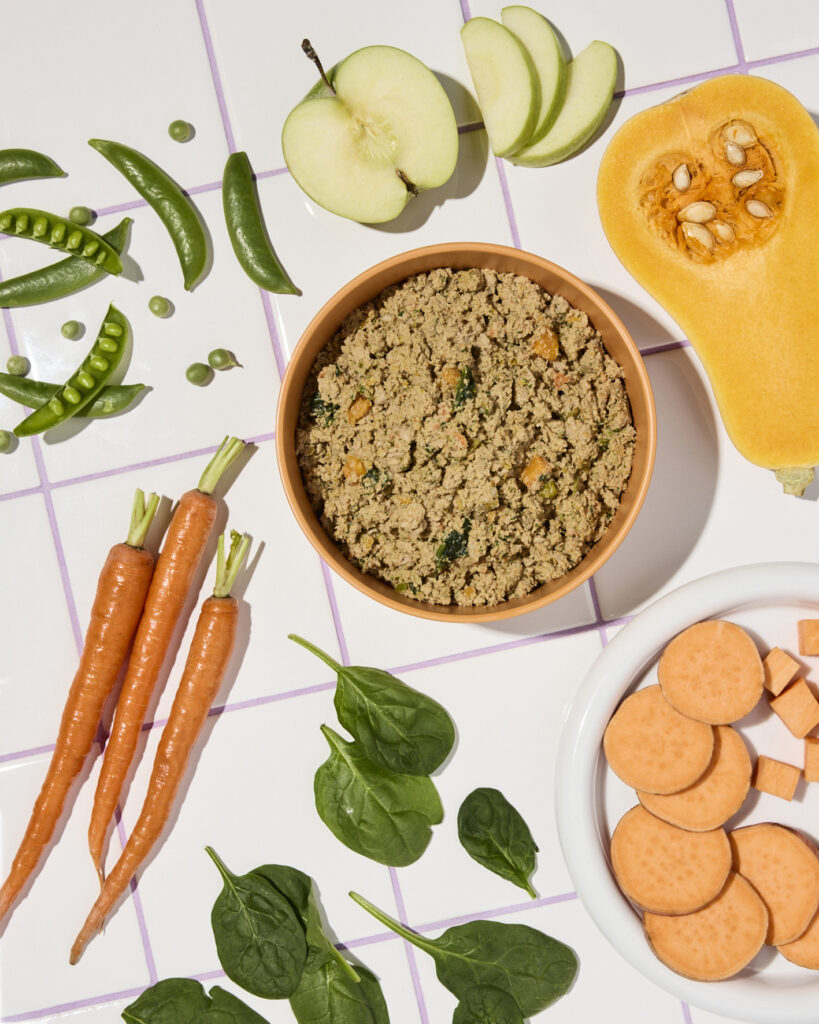
The Benefits of Fresh, Human-Grade Puppy Food
Fresh food options like those provided by Ollie offer several advantages for growing puppies:
- Whole Food Ingredients: Real meats, vegetables, and fruits provide natural sources of essential nutrients.
- Customized Nutrition: Formulations can be tailored to your puppy’s specific needs based on age, breed, and activity level.
- Gentle Processing: Lower-temperature cooking methods preserve more nutrients than traditional kibble manufacturing.
- Higher Digestibility: More of the nutrients in fresh food are actually absorbed and used by your puppy’s body.
- Fewer Preservatives: Fresh foods typically contain minimal or no artificial preservatives.
Transitioning Your Puppy to Adult Food
Knowing when and how to transition your puppy to adult food is important for their continued health.
Timing the Transition
The right time to switch from puppy to adult food depends primarily on your dog’s size:
- Small breeds: 7-9 months
- Medium breeds: Around 12 months
- Large breeds: 12-14 months[1]
If you’re uncertain, it’s better to keep your puppy on puppy food slightly longer than needed rather than switching too early[1].
How to Make the Switch
To avoid digestive upset, transition gradually over 7-10 days:
- Days 1-2: 75% puppy food, 25% adult food
- Days 3-4: 50% puppy food, 50% adult food
- Days 5-7: 25% puppy food, 75% adult food
- Days 8-10: 100% adult food
Monitor your puppy’s stool and appetite during the transition. If you notice any digestive issues, slow down the process by extending each step for a few more days.

Frequently Asked Questions
How much should I feed my puppy? Feeding amounts vary based on your puppy’s age, breed, size, and activity level. Follow the guidelines on your puppy food packaging as a starting point, but adjust based on your puppy’s body condition and growth rate. Your veterinarian can help you determine the ideal amount.
Can I feed my puppy human food? While some human foods are safe for puppies in moderation, many are harmful or even toxic. If you choose to supplement with human foods, stick to plain cooked meats, some fruits, and vegetables. Always research before offering any human food to your puppy.
How do I know if my puppy’s food is working well for them? A healthy puppy should have consistent energy levels, a shiny coat, healthy skin, and regular bowel movements. They should be growing steadily without becoming overweight. If you notice issues like persistent diarrhea, excessive gas, or a dull coat, consult your veterinarian about possible food sensitivities.
Should I feed my puppy grain-free food? The decision to feed grain-free should be based on your individual puppy’s needs rather than trends. Some puppies with specific allergies may benefit from grain-free diets, but for most puppies, whole grains provide valuable nutrients. Consult your veterinarian before choosing a grain-free diet.
How do I transition my puppy from the breeder’s food to my chosen food? Follow the same gradual transition process outlined above, taking 7-10 days to slowly introduce the new food. This gives your puppy’s digestive system time to adjust and reduces the likelihood of stomach upset.
Choosing the right food for your puppy is one of the most important decisions you’ll make for their health. By understanding their unique nutritional needs at different growth stages and selecting high-quality food formulated specifically for puppies, you’re setting them up for a lifetime of health and wellness. Whether you choose premium kibble, wet food, or fresh options like Ollie, the most important factor is that the food meets all your puppy’s nutritional requirements during this critical growth period.
Citations
[1] https://www.akc.org/expert-advice/nutrition/puppy-feeding-fundamentals/
[2] https://www.royalcanin.com/us/dogs/puppy/puppy-feeding-and-nutrition
Tagged As:

The nutrition your dog needs,
the food they want.

Enjoying our articles? Subscribe our Newsletters and get new articles directly to your inbox
You might also like
2 July 2025
5 MINS READ
Upgrade Your Dog’s Bowl: The Truth About Premium Food Quality
Every pup parent wants the best for their dog, but choosing the right food for your dog can be overwhelming. With so many options, how do you know what truly makes a food “premium”? The answer lie…
by Serena
2 July 2025
5 MINS READ
Why Top Vets Recommend Premium Dog Food with Real Ingredients
A longer, healthier life starts with the right nutrition. The quality of your dog’s food can directly impact everything from energy levels to immune function. As more pet parents seek out the be…
by Serena
2 July 2025
6 MINS READ
Top Dog Food Options for Allergies That Truly Make a Difference
If your dog is constantly scratching, dealing with upset stomachs, or battling recurring ear infections, food allergies might be the culprit. Finding the right food for allergies can be a game-cha…
by Serena
